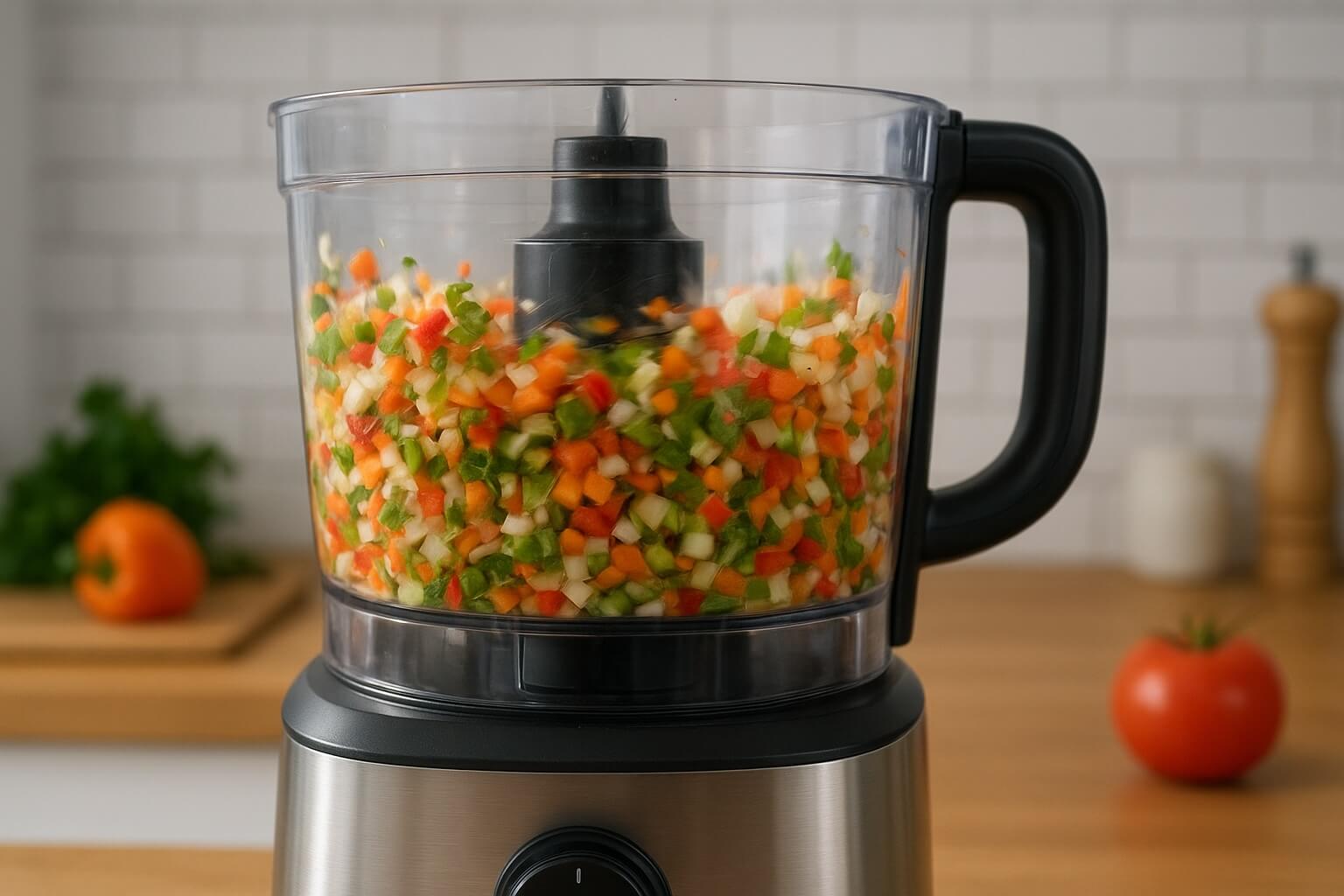Food Processor: Functions and Alternatives
A food processor is one of the most versatile appliances you can add to your kitchen. It saves time, reduces effort, and opens up possibilities for recipes that would otherwise be tedious. While not essential for everyone, once you have one, you’ll wonder how you cooked without it.

What a Food Processor Can Do
- Chopping and slicing – onions, carrots, celery, and more in seconds
- Shredding and grating – cheese, potatoes for hash browns, or vegetables for slaws
- Pureeing – soups, dips, baby food, or nut butters
- Mixing dough – pie crust, pizza dough, or bread with minimal effort
- Grinding – meat, nuts, or spices depending on blade attachments
👉 Tip: Don’t confuse a food processor with a blender. Blenders excel with liquids, while processors handle solids better.
When a Food Processor Shines
- Large batch cooking — prepping vegetables for soup or meal prep
- Making dips and spreads like hummus, pesto, or salsa
- Creating smooth nut butters or grinding nuts for desserts
- Quick doughs like pastry or pizza crust
Alternatives to a Food Processor
If you don’t own one, there are workarounds:
- Sharp knife – for chopping vegetables (takes longer but more control)
- Box grater – for shredding cheese or vegetables
- Blender – for liquids and smoothies, though not great for dough or dry mixes
- Mortar and pestle – for grinding spices, making pesto, or crushing garlic
Care and Maintenance
- Wash blades and bowls immediately after use to prevent staining and odors
- Avoid dishwashers for blades — hand washing keeps them sharper
- Store attachments together so you don’t misplace specialty disks
Conclusion
A food processor is a true workhorse for chopping, shredding, pureeing, and even dough making. While alternatives exist, nothing matches its speed and consistency. If you cook often, especially in large batches, it’s a tool that can transform your kitchen routine.